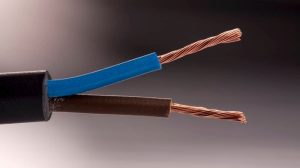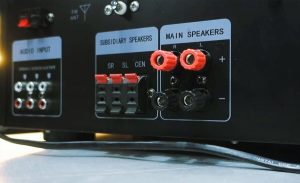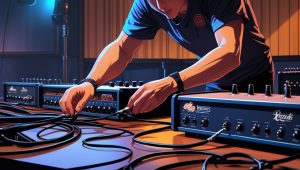Connecting a subwoofer to your car stereo without an amplifier sounds tricky, but it’s entirely possible. Subwoofers add that deep, booming bass that transforms your car’s audio into a concert-like experience. While amplifiers typically power subwoofers, you can bypass them with the right setup, saving money and space. This guide walks you through the process step-by-step, ensuring your car audio system delivers powerful bass without the extra hardware. Whether you’re a car audio newbie or a seasoned DIY enthusiast, you’ll find this approach straightforward and effective.
Contents
- Why Connect a Subwoofer Without an Amplifier?
- Tools and Materials Needed
- Step 1: Check Your Car Stereo’s Compatibility
- Step 2: Plan the Subwoofer Placement
- Step 3: Connect the Power and Ground Wires
- Step 4: Connect the Subwoofer to the Car Stereo
- Step 5: Test the Subwoofer
- Step 6: Finalize the Installation
- Tips for Optimizing Your Subwoofer’s Performance
- Common Issues and Troubleshooting
- Benefits of a No-Amplifier Subwoofer Setup
- Limitations to Consider
- Enhancing Your Car Audio System Further
- Safety Considerations
- Why This Setup Works for Casual Listeners
- Conclusion
Why Connect a Subwoofer Without an Amplifier?
Subwoofers enhance low-frequency sounds, giving music depth and richness. However, amplifiers can be expensive, bulky, and complex to install. By connecting a subwoofer directly to your car stereo, you simplify the setup, reduce costs, and still achieve impressive bass. This method works best for casual listeners who want improved sound without investing in professional-grade equipment. Before diving in, let’s explore the tools and components you’ll need to make this happen.
Tools and Materials Needed
To connect a subwoofer to your car stereo without an amp, gather these essentials:
- Subwoofer: Choose a powered subwoofer or one with a built-in amplifier for best results.
- Car stereo with RCA outputs: Most modern head units have RCA preamp outputs for subwoofer connections.
- Speaker wires: High-quality, 16-gauge or thicker wires ensure efficient power transfer.
- RCA cables: These connect the stereo’s preamp outputs to the subwoofer.
- Wire cutters/strippers: For preparing and trimming wires.
- Electrical tape: Secures connections and prevents shorts.
- Screwdriver set: For removing panels or securing the subwoofer.
- Grounding wire: Ensures safe electrical flow.
- Fuse holder and fuse: Protects the system from power surges.
- Multimeter: Checks voltage and ensures proper connections.
Having these tools ready streamlines the installation process. Next, let’s verify your car stereo’s compatibility.
Step 1: Check Your Car Stereo’s Compatibility
Not every car stereo supports a direct subwoofer connection. Your head unit must have RCA preamp outputs or a dedicated subwoofer output. These ports, typically red and white, send a low-level signal to the subwoofer. Check your stereo’s manual or back panel for these outputs. If your stereo lacks RCA outputs, you’ll need a high-to-low level converter to adapt speaker-level outputs to a subwoofer-friendly signal.
Also, confirm your subwoofer’s power requirements. Powered subwoofers, which have built-in amplifiers, work best for this setup. They draw power directly from the car’s battery or stereo, eliminating the need for an external amp. Passive subwoofers, on the other hand, rely on external power, making them less ideal for this method. Once you’ve confirmed compatibility, you’re ready to plan the installation.
Step 2: Plan the Subwoofer Placement
Choosing the right spot for your subwoofer impacts sound quality and safety. Most drivers place subwoofers in the trunk, as it offers ample space and directs bass effectively into the cabin. Alternatively, you can mount it under a seat or in a custom enclosure, depending on your vehicle’s layout. Consider these factors when deciding:
- Space: Ensure the subwoofer fits without obstructing trunk access or passenger comfort.
- Ventilation: Subwoofers generate heat, so avoid cramped spots with poor airflow.
- Sound direction: Position the subwoofer to project sound toward the car’s interior for optimal bass.
Secure the subwoofer to prevent it from shifting while driving. Use brackets, Velcro, or a custom enclosure to keep it stable. With placement planned, let’s move to the wiring process.
Step 3: Connect the Power and Ground Wires
Proper wiring ensures your subwoofer operates safely and efficiently. Start by disconnecting your car’s battery to avoid electrical shocks or short circuits. Follow these steps to connect the power and ground wires:
- Locate a power source: Find a 12V power source, typically the car battery. Attach a fuse holder within 12 inches of the battery to protect the circuit.
- Run the power wire: Route a power wire from the battery to the subwoofer’s power input. Use a grommet when passing through the firewall to prevent wire damage.
- Connect the ground wire: Attach a grounding wire to a clean, unpainted metal surface near the subwoofer. Sand the area to ensure a solid connection.
- Secure the wires: Use zip ties or tape to keep wires tidy and away from moving parts like pedals or the engine.
Test the power connection with a multimeter to confirm a steady 12V supply. A stable power source prevents audio distortion and protects your subwoofer. Now, let’s connect the audio signal.
Step 4: Connect the Subwoofer to the Car Stereo
The audio connection links your car stereo to the subwoofer, delivering the bass signal. Here’s how to do it:
- Locate the RCA outputs: Find the RCA preamp outputs on the back of your car stereo. These are usually labeled “Sub Out” or “Pre Out.”
- Run RCA cables: Connect RCA cables from the stereo’s outputs to the subwoofer’s RCA inputs. Route the cables along the car’s interior, avoiding interference from power wires.
- Use a high-to-low converter (if needed): If your stereo lacks RCA outputs, connect a high-to-low level converter to the stereo’s speaker wires. This device converts the speaker-level signal to a low-level signal compatible with the subwoofer.
- Secure connections: Double-check that all plugs are firmly seated to avoid signal loss.
If your subwoofer has a remote turn-on wire, connect it to the stereo’s remote output or an ignition-switched power source. This wire activates the subwoofer when the stereo powers on. With the audio connection complete, you’re ready to test the system.
Step 5: Test the Subwoofer
Before finalizing the installation, test the subwoofer to ensure everything works correctly. Reconnect the car battery and turn on the stereo. Play a bass-heavy track and listen for these signs of success:
- Clear bass output: The subwoofer should produce deep, undistorted bass.
- No rattling: Loose components or improper mounting can cause vibrations. Secure any loose parts.
- Balanced sound: Adjust the stereo’s equalizer settings to blend the subwoofer’s output with the main speakers.
If the subwoofer doesn’t work, check all connections, especially the power, ground, and RCA cables. Use a multimeter to verify voltage at the subwoofer’s power input. If the sound is weak, ensure the stereo’s subwoofer output is enabled in the settings menu. Once the system sounds great, tidy up the wiring.
Step 6: Finalize the Installation
With the subwoofer working, secure all wires and components. Use electrical tape or heat-shrink tubing to insulate exposed connections, preventing short circuits. Route cables under carpets or along trim panels to keep the interior clean. Double-check that the subwoofer is firmly mounted to avoid movement during driving.
If you’re using a powered subwoofer, adjust its built-in controls, such as gain, crossover frequency, and phase, to fine-tune the bass. The crossover frequency determines which low frequencies the subwoofer handles, typically set between 80-120 Hz for car audio. Experiment with these settings to achieve a balanced sound that complements your main speakers.
Tips for Optimizing Your Subwoofer’s Performance
To get the most out of your subwoofer without an amplifier, try these tips:
- Choose a high-quality subwoofer: A powered subwoofer with a built-in amp delivers better performance than a passive model.
- Upgrade your stereo: A head unit with strong preamp outputs improves signal quality, enhancing bass.
- Soundproof your car: Apply sound-deadening mats to doors and the trunk to reduce vibrations and improve bass clarity.
- Regular maintenance: Check connections periodically to prevent corrosion or loosening.
- Experiment with placement: Move the subwoofer to different spots in the trunk to find the best bass response.
These tweaks enhance your audio experience, making your car’s sound system rival professional setups.
Common Issues and Troubleshooting
Even with careful installation, you might encounter issues. Here are common problems and solutions:
- No sound from subwoofer: Verify power and RCA connections. Ensure the stereo’s subwoofer output is enabled.
- Distorted bass: Check for loose wires or a weak ground connection. Adjust the subwoofer’s gain to prevent clipping.
- Humming or buzzing: Separate RCA cables from power wires to reduce interference. Confirm the ground connection is secure.
- Subwoofer cuts out: Inspect the fuse and power wire for damage. Ensure the subwoofer isn’t overheating due to poor ventilation.
If problems persist, consult your subwoofer’s manual or seek help from a car audio professional. Most issues stem from loose connections or incorrect settings, so a thorough check usually resolves them.
Benefits of a No-Amplifier Subwoofer Setup
Skipping the amplifier offers several advantages:
- Cost savings: Amplifiers can cost hundreds of dollars, while this method uses affordable components.
- Simpler installation: Fewer components mean less wiring and a quicker setup.
- Space efficiency: Without an amp, you free up trunk or cabin space.
- Lower power draw: Powered subwoofers use less battery power than separate amp-subwoofer combos.
This approach delivers solid bass for everyday listening, perfect for budget-conscious audiophiles.
Limitations to Consider
While effective, a no-amplifier setup has limits. Powered subwoofers may not match the raw power of an amplified system, especially for large vehicles or high-volume listening. If you crave earth-shaking bass, an external amplifier might be worth the investment. Additionally, older car stereos without RCA outputs require extra adapters, adding complexity. Weigh these factors against your audio goals before committing.
Enhancing Your Car Audio System Further
If you love the results but want more, consider these upgrades:
- Add a capacitor: A capacitor stabilizes power delivery, improving subwoofer performance during bass-heavy tracks.
- Upgrade speakers: High-quality door speakers complement the subwoofer, creating a balanced soundstage.
- Install a better head unit: A premium stereo with advanced equalizer settings enhances bass control.
- Explore enclosures: A sealed or ported subwoofer box optimizes bass output for your vehicle.
These additions elevate your car’s audio without breaking the bank.
Safety Considerations
Working with car electronics requires caution. Always disconnect the battery before handling wires to avoid shocks or damage. Use insulated tools to prevent accidental shorts. Secure all components to ensure they don’t interfere with driving. If you’re unsure about any step, consult a professional to avoid costly mistakes.
Why This Setup Works for Casual Listeners
For most drivers, a subwoofer without an amplifier strikes the perfect balance. It delivers rich, immersive bass without the complexity or expense of a full-blown audio system. Whether you’re cruising to hip-hop, rock, or EDM, this setup makes every drive more enjoyable. The process is accessible, requiring only basic tools and a bit of patience.
Conclusion
Connecting a subwoofer to your car stereo without an amplifier is a practical, budget-friendly way to boost your audio system. By following these steps—checking compatibility, planning placement, wiring carefully, and testing thoroughly—you’ll enjoy deep, powerful bass in no time. Optimize the setup with quality components and fine-tuned settings to rival more expensive systems. Ready to feel the music? Grab your tools, pick a powered subwoofer, and transform your car into a rolling soundstage.






